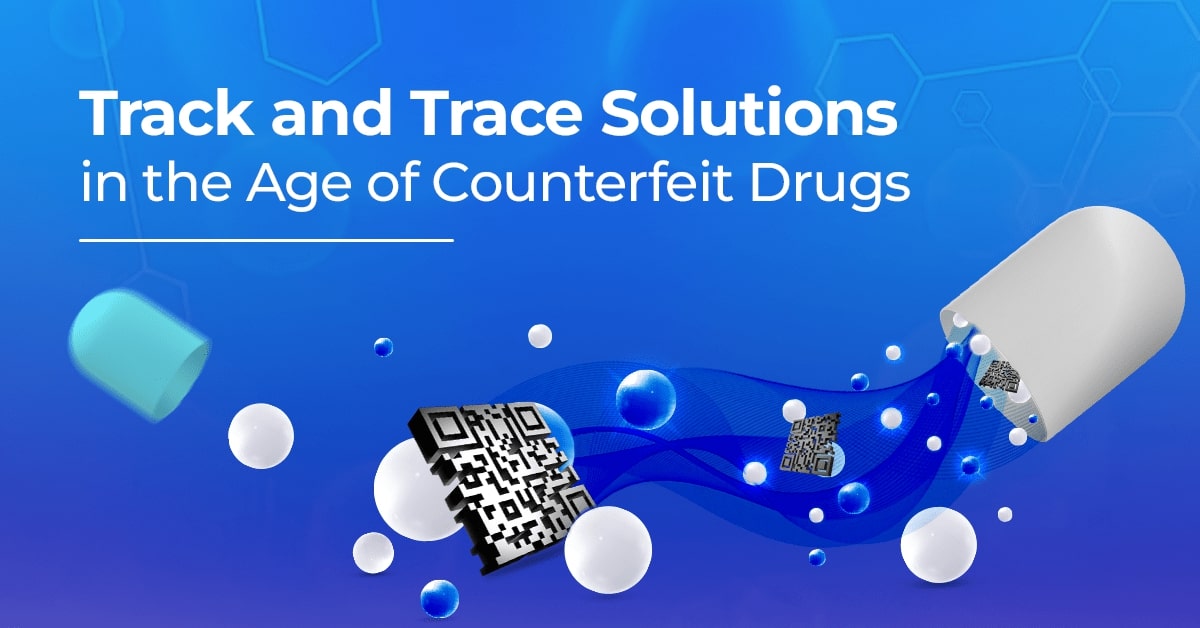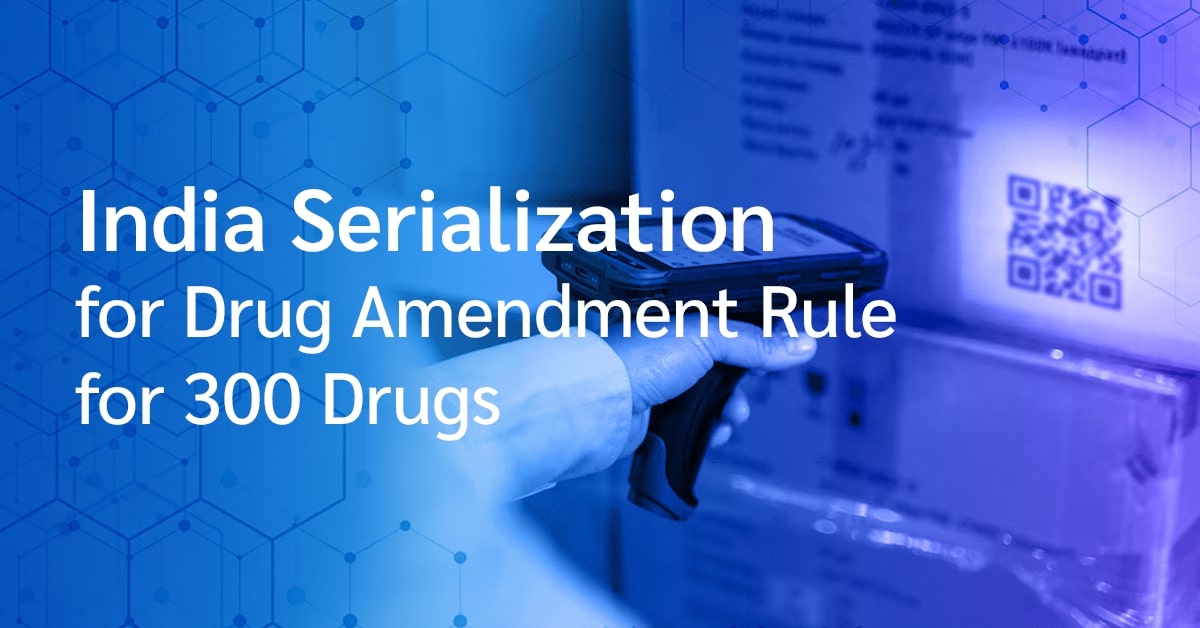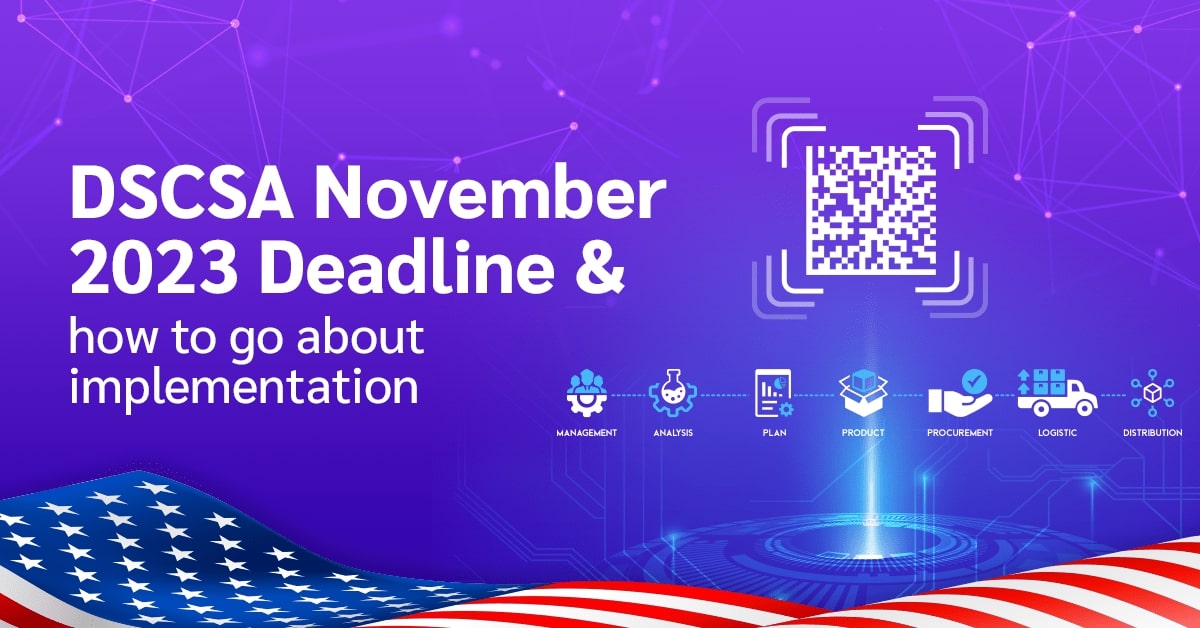Medical supply chains play a vital role in delivering essential health commodities and ensuring the availability of medicines and medical supplies, especially in developing countries.
Despite Zambia’s focus on primary health care (PHC) sector and commitment to improving health system efficiency, there are persistent operational challenges like procurement delays, incomplete tracking visibility, and inadequate storage capacities. Many Challenges remain most are related to counterfeit products observed through several stages of supply chain.
To overcome challenges in late October 2021, the Zambia Medicines Regulatory Authority (ZAMRA) took important step that needs to be taken in order to set up pharmaceutical traceability systems, ZAMRA published draft Guideline on Identification and Labelling of Medicines and Allied Substances and Master Data Sharing for public comments and feedback.
The Zambia Medicines Regulatory Authority’s main objective is to ensure that all medicines and allied substances being made available to the Zambian people consistently meet the set standards of quality, safety and efficacy
ZAMRA hopes to create efficiencies in the public and private health supply chains through standardized identification, automated data capture, and decreased cost in gaining compliance. Specifically, global standards for labelling and packaging are aimed at:
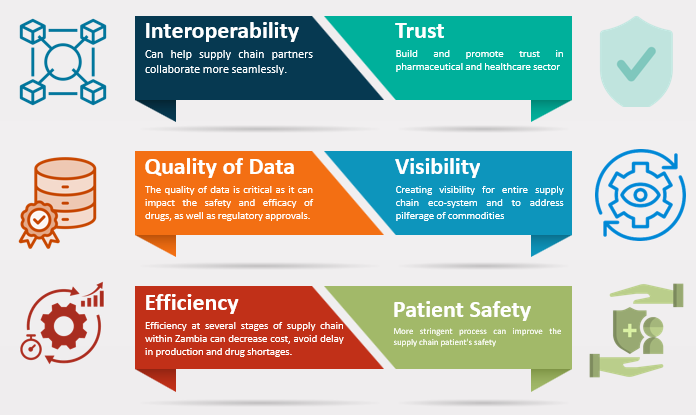
Product labelling & packaging requirement –
All tertiary and secondary packages are required to be labelled in accordance with the specified barcode requirement, encoded and printed in their human readable form. Identification and labelling of primary packaging level is mandatory if – Item is in carton less packaging i.e. without secondary packaging.
All barcode symbols should meet print-quality “Grade C” (1.5 or above).
Tertiary packaging barcoding requirement –
The barcode for the logistic unit shall be presented in a concatenated manner
| Data Attributes | Values | Application Identifier | Additional Information |
|---|---|---|---|
| SSCC | Serial shipping container code to identify logistic unit | 00 | As per GS1 general specification, a Serial Shipping Container Code may be re-used after a period of one year. |
Symbol – GS1 128 :

Secondary packaging barcoding requirement –
Secondary packaging is a level of packaging that may contain one or more primary packages, or a group of primary packages containing a single item
| Data Attributes | Values | Application Identifier | Additional Information |
|---|---|---|---|
| GTIN 14 | GTINs are assigned by the brand owner (MAH)of the trade item and are used to identify trade items | 01 | http://www.gs1.org/gtin https://www.gs1.org/1/gtinrules/en/healthcare |
| Expiry date | The data field contains an expiration date (YY/MM/DD) | 17 | Year: the tens and units of the year (e.g., 2003 = 03), which is mandatory Month: the number of the month (e.g., January = 01), which is mandatory Day: the number of the day of the relevant month (e.g., second day = 02), which is optional |
| Batch number | The data field contains a batch or lot number. The batch or lot number field is alphanumeric (up to 20 characters). | 10 | |
| Serial number | When combined with a GTIN, a serial number uniquely identifies an individual item. The manufacturer determines the serial number. (Alphanumeric up to 20 characters) | 21 |
Symbol – GS1 2D DataMatrix :
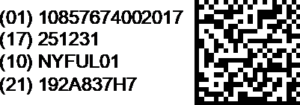
Primary packaging barcoding requirement –
If implemented, the unique identifier for the primary pack must include a GS1 Data Matrix encoded with the following information and printed adjacent to the data carrier in human readable form
| Data Attributes | Values | Application Identifier | Additional Information |
|---|---|---|---|
| GTIN 14 | GTINs are assigned by the brand owner (MAH) of the trade item and are used to identify trade items. | 01 |
http://www.gs1.org/gtin https://www.gs1.org/1/gtinrules/en/healthcare |
| Expiry date | The data field contains an expiration date (YY/MM/DD) | 17 |
Year: the tens and units of the year (e.g., 2003 = 03), which is mandatory Month: the number of the month (e.g., January = 01), which is mandatory Day: the number of the day of the relevant month (e.g., second day = 02), which is optional |
| Batch number | The data field contains a batch or lot number. The batch or lot number field is alphanumeric (up to 20 characters). | 10 | |
| Serial number | When combined with a GTIN, a serial number uniquely identifies an individual item. The manufacturer determines the serial number. (Alphanumeric up to 20 characters) | 21 |
Symbol – GS1 2D DataMatrix :
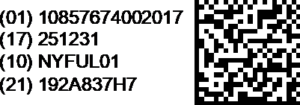
Jekson on Zambia Regulation –
Reetrak (L3) is a track-and-trace solution designed to fight counterfeiting and unauthorized distribution. Reetrak seamlessly exchange information between various IT system, equipment’s which involved in Serialization and Aggregation. Reetrak is essential for site level activities hence responsible for reporting data from plant level to enterprises level. High-tech technologies for serialization and aggregation, vision inspection solutions, and barcode verification are central to combating counterfeit, ensuring Zambia regulatory compliance.
Reetrak from Jekson can assisting Brand owners/Manufacturers to comply with regulation around the world, primarily supports Industry standards & best practices.
As ZAMRA proceeding towards advancing Traceability plans, its assumed that alike other African countries ZAMRA will have their own reporting structure where Brand owners/Manufacturer will report production details.
ReeSource (L4) by Jekson is comprehensive SaaS based solution helps supply chain stakeholders to comply with most of the world’s pharmaceutical regulations.
Key features of ReeSource in business operations –
- Product Serialization and Serial number repository (compliant with GS1 standards)
- EPCIS repository and EPCIS communication protocol (compliant with GS1 standards)
- End to End Supply Chain visibility
- Cloud based solution for warehousing
- Product authenticity (End Consumer visibility)
- User friendly programs
ZAMRA is set to finalize and publish the pharmaceutical guidelines early in 2022. Once published, Zambia will be the second country in Sub-Sahara Africa, the first being Ethiopia, to have in place the necessary regulatory guidance for pharmaceutical traceability using GS1 standards. Additionally, this work is championed with leadership from Ministry of Health. This guideline shall apply to all medicines which are meant for supply to the Zambian market.
To know more about how Jekson Solutions comply to the Zambia Regulations contact us at marketing@jeksonvision.com


